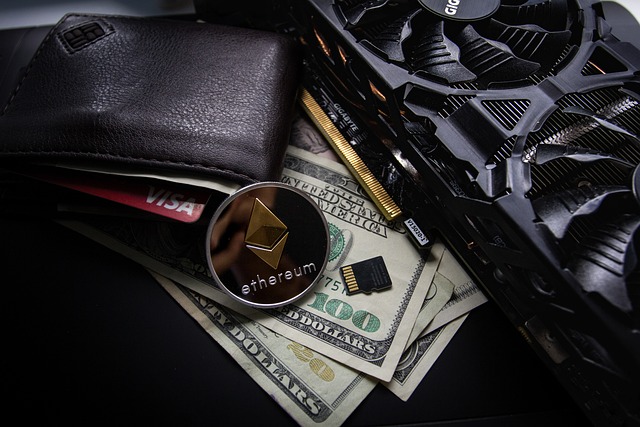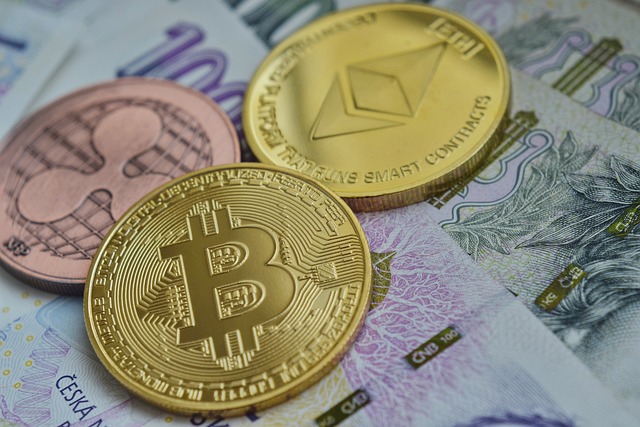
Decentralized finance (DeFi) has revolutionized the financial landscape by offering a range of innovative solutions that prioritize freedom and autonomy.
In this article, we explore eight notable aspects of DeFi that have garnered significant attention:
- Smart contracts: DeFi relies on smart contracts, which are self-executing contracts with the terms of the agreement directly written into code. These contracts automate processes and eliminate the need for intermediaries.
- Investment opportunities: DeFi opens up a world of investment opportunities, allowing users to invest in various decentralized applications (dApps) and protocols. This includes investing in lending and borrowing platforms, decentralized exchanges, and more.
- Yield farming: Yield farming, also known as liquidity mining, is a popular trend in DeFi. It involves users providing liquidity to decentralized exchanges or protocols and earning rewards in return.
- DeFi tokens: DeFi tokens are native tokens of decentralized applications and protocols. These tokens often have utility within the ecosystem and can be used for governance, staking, or earning rewards.
- Liquidity pools: Liquidity pools are pools of funds locked in smart contracts that enable decentralized trading. Users can contribute their assets to these pools and earn a share of the trading fees generated by the pool.
- Loan protocols: DeFi loan protocols allow users to borrow or lend digital assets without the need for traditional intermediaries like banks. These protocols often use collateral to secure loans and offer competitive interest rates.
- Governance tokens: Governance tokens give holders the right to participate in the decision-making process of a decentralized protocol. Holders can vote on proposals, changes, and upgrades to the protocol.
- Insurance options: DeFi introduces innovative insurance options to protect against smart contract vulnerabilities and hacks. Users can purchase insurance coverage to mitigate their risks.
By delving into these key elements, we aim to provide a comprehensive and analytical overview of the DeFi ecosystem, empowering readers to navigate this rapidly evolving and exciting field with confidence and insight.
Smart Contracts
The use of smart contracts plays a crucial role in the functioning of decentralized finance (DeFi) platforms. Smart contracts are self-executing contracts with the terms of the agreement directly written into code. They automate the execution of transactions and eliminate the need for intermediaries, providing a transparent and trustless environment.
However, smart contracts also pose scalability challenges and security vulnerabilities. Scalability challenges arise due to the limitations of the underlying blockchain technology, such as network congestion and high fees. Security vulnerabilities can occur if the code of the smart contract is not properly audited and tested, leaving room for potential exploits and hacks.
To address these issues, ongoing research and development are being conducted to improve scalability and enhance security measures, ensuring the continued growth and stability of DeFi platforms.
Investment Opportunities
When considering investment opportunities in decentralized finance (DeFi), it is important to weigh the potential high returns against the inherent risks. DeFi offers the possibility of significant profits, but it also comes with volatility and uncertainty.

To mitigate these risks, investors should consider diversification strategies, spreading their investments across different DeFi projects and asset classes to minimize exposure to any single risk factor.
High Returns Vs. Risks
Investing in decentralized finance (DeFi) presents the opportunity for high returns, albeit with inherent risks, due to the innovative nature of the ecosystem. Here are some key points to consider when it comes to high returns vs. risks in DeFi:
- High risk: DeFi lending, one of the most popular investment opportunities in the space, involves lending funds to borrowers without the need for intermediaries. While it offers attractive returns, it also exposes investors to the risk of default.
- Smart contract vulnerabilities: DeFi platforms rely heavily on smart contracts, which are not immune to bugs or security breaches. Exploits and hacks can result in substantial losses for investors.
- Market volatility: The cryptocurrency market is known for its volatility, and DeFi investments are no exception. Prices of DeFi tokens can experience significant fluctuations, leading to potential gains or losses.
- Regulatory uncertainty: DeFi operates in a relatively unregulated environment, which brings both opportunities and risks. Regulatory changes or crackdowns could impact the viability and profitability of DeFi investments.
When considering high returns in DeFi, it is crucial to assess the associated risks and make informed investment decisions.
Diversification Strategies for Defi
To effectively manage risks in decentralized finance (DeFi) investments, diversification strategies can be employed. Diversification is a risk management technique that involves spreading investments across different assets or sectors to reduce exposure to any single investment.
In the context of DeFi, diversification can be achieved by investing in a variety of DeFi protocols, tokens, and strategies. By diversifying, investors can mitigate the impact of potential losses in one investment by gaining from others that may perform well. This approach helps to protect against the volatility and potential risks associated with individual DeFi investments.
Furthermore, diversification strategies can also help investors take advantage of different investment opportunities within the DeFi ecosystem, maximizing the potential for returns while minimizing risks.
Yield Farming
Yield farming involves leveraging decentralized finance protocols to earn passive income through providing liquidity to various liquidity pools. This process, also known as liquidity mining, has gained significant attention in the world of decentralized finance (DeFi).

Here are four key aspects to consider when engaging in yield farming:
- Liquidity provision: Yield farmers deposit their assets into liquidity pools, enabling other users to trade these assets. In return, they earn fees generated by the transactions.
- Risk management: Yield farming involves risks such as smart contract vulnerabilities, impermanent loss, and market volatility. It is crucial to thoroughly assess and manage these risks before participating in any yield farming activity.
- Rewards and incentives: Yield farmers are rewarded with additional tokens or governance rights for providing liquidity. These rewards can vary depending on factors such as the duration of liquidity provision and the protocol being used.
- Research and due diligence: Before engaging in yield farming, it is essential to conduct thorough research on the protocols, platforms, and liquidity pools involved. Understanding the underlying technology and potential risks is crucial for successful yield farming ventures.
DeFi Tokens
As we delve into the topic of DeFi Tokens, it is important to note that these digital assets play a significant role in the realm of decentralized finance, providing investors with diverse opportunities for growth and participation.
DeFi Tokens are native tokens of decentralized finance platforms and serve various purposes within the ecosystem. Tokenomics analysis is crucial when evaluating these tokens, as it involves the study of their supply, demand, distribution, and utility. Understanding the tokenomics can help investors assess the potential value and growth prospects of DeFi Tokens.
However, it is essential to note that DeFi Tokens can be subject to market volatility, as they are influenced by factors such as market sentiment, regulatory developments, and technological advancements. Therefore, investors should exercise caution and conduct thorough research before engaging with DeFi Tokens.
Liquidity Pools
Liquidity pools play a crucial role in decentralized finance (DeFi) by determining the pool size impact on market stability and the incentives for liquidity providers.
The pool size, which represents the total value locked in the pool, directly influences the liquidity available for trading and impacts market prices.
Additionally, liquidity providers are rewarded with incentives such as transaction fees and yield farming rewards, encouraging them to supply assets to the pool and maintain liquidity.

Pool Size Impact
The impact of pool size on decentralized finance (DeFi) liquidity pools is a critical factor to consider in understanding their effectiveness and potential risks. Here are four key points to consider regarding pool size dynamics and their impact on returns:
- Increased pool size: A larger pool size generally leads to higher liquidity, reducing slippage and improving trading efficiency.
- Decreased pool size: Conversely, a smaller pool size can result in lower liquidity, making it more difficult to execute trades and potentially increasing slippage.
- Competition for returns: As more liquidity providers join a pool, the returns may decrease due to a larger number of participants sharing the rewards.
- Risk of impermanent loss: Pool size also affects the risk of impermanent loss, which occurs when the value of the pool's underlying assets changes relative to an external benchmark, potentially resulting in reduced returns for liquidity providers.
Understanding the dynamics of pool size is crucial for investors and participants in DeFi liquidity pools to make informed decisions and mitigate potential risks.
Liquidity Provider Incentives
One important aspect to consider when discussing liquidity provider incentives in decentralized finance (DeFi) is the impact of pool size dynamics on potential returns and risks.
Liquidity provider incentives are designed to attract participants to provide liquidity to decentralized exchanges or lending platforms. Incentive mechanisms, such as yield farming or liquidity mining, reward liquidity providers with additional tokens or fees for their participation.
However, the size of the liquidity pool plays a crucial role in determining the potential returns and risks for liquidity providers. A larger pool size generally leads to higher liquidity and lower slippage, which can result in increased trading volumes and higher returns.
On the other hand, a smaller pool size may offer higher yields but also exposes liquidity providers to higher risks.
Therefore, when assessing the potential returns and risks, it is essential to consider the pool size dynamics and perform thorough APY calculations to make informed investment decisions in DeFi liquidity pools.

Loan Protocols
Loan protocols play a crucial role in decentralized finance (DeFi) by providing individuals and institutions with the opportunity to borrow and lend digital assets in a secure and transparent manner. These protocols enable users to access loans without the need for intermediaries, offering a more efficient and cost-effective alternative to traditional banking systems.
Here are four notable aspects of loan protocols in DeFi:
- Loan Collateral: DeFi loan protocols typically require borrowers to provide collateral in the form of digital assets. This collateral acts as security for the loan and helps mitigate the risk of default.
- Interest Rates: Loan protocols utilize smart contracts to automate the lending process, allowing for transparent and competitive interest rates. Borrowers can choose from various loan offers, and lenders can earn interest on their idle assets.
- Overcollateralization: To ensure the safety of lenders, DeFi loan protocols usually require borrowers to provide collateral worth more than the borrowed amount. This overcollateralization helps protect lenders in case of default or market volatility.
- Programmability: Loan protocols in DeFi offer programmable features, allowing users to set customized loan terms, such as interest rates, repayment schedules, and liquidation thresholds. This flexibility empowers users to tailor their borrowing and lending strategies to their specific needs and risk tolerance.
Governance Tokens
Governance tokens play a pivotal role in decentralized finance (DeFi) by granting holders the ability to participate in decision-making processes and governance of the platform. These tokens provide holders with DeFi voting power, enabling them to influence critical decisions such as protocol upgrades, parameter changes, and the addition or removal of features.
By holding governance tokens, users have a say in shaping the future of the platform and can actively contribute to its development. In addition to their governance function, these tokens often offer rewards to holders, incentivizing active participation and engagement. These rewards can take various forms, such as a share of transaction fees or token distributions.
Governance tokens empower individuals within the DeFi ecosystem, allowing them to exercise their rights and contribute to the direction and growth of decentralized finance.
Insurance Options
Insurance options are a crucial aspect of decentralized finance (DeFi), providing users with a range of risk management tools to protect their investments and mitigate potential losses. In the world of DeFi, where smart contracts and decentralized protocols govern financial transactions, it is important to have coverage options that safeguard against unforeseen events.
Here are four key aspects of insurance options in DeFi:

- Risk management: DeFi insurance allows users to manage the risks associated with their investments and protect against potential vulnerabilities in smart contracts or protocols.
- Coverage options: DeFi insurance offers a variety of coverage options, including protection against hacks, exploits, market crashes, or other unforeseen events that could result in financial losses.
- Transparency and trust: Insurance options in DeFi are built on transparent and auditable smart contracts, ensuring trust and accountability for both users and insurers.
- Decentralized governance: Many DeFi insurance platforms include governance features, allowing users to participate in decision-making processes and shape the future of the insurance protocols.
With these insurance options, DeFi users can have peace of mind knowing that their investments are protected, fostering a sense of freedom and security in the decentralized finance ecosystem.
Frequently Asked Questions
How Do Smart Contracts Ensure the Security and Trustworthiness of Decentralized Finance (Defi) Transactions?
Smart contracts ensure the security and trustworthiness of decentralized finance (DeFi) transactions through robust security measures and trust verification mechanisms. These measures include cryptographic protocols, consensus algorithms, and code audits to prevent fraud, hacking, and unauthorized access.
What Are Some Common Risks Associated With Investment Opportunities in Defi?
Investment evaluation in DeFi involves assessing risks associated with investment opportunities. Common risks include smart contract vulnerabilities, hacking incidents, regulatory uncertainties, market volatility, and liquidity risks. Proper due diligence and risk management strategies are crucial for mitigating these risks.
Can You Explain the Concept of Yield Farming and How It Works in Defi?
Yield farming in DeFi refers to the practice of earning rewards by staking or lending assets on decentralized platforms. It involves deploying capital strategically to maximize returns through various strategies, such as liquidity provision or participating in governance.
What Factors Should Be Considered When Evaluating the Potential of Defi Tokens?
When evaluating the potential of DeFi tokens, it is crucial to consider token evaluation criteria such as market trends, tokenomics, team expertise, and community support. These factors provide valuable insights into the token's growth and sustainability within the dynamic DeFi ecosystem.
How Do Liquidity Pools Function in Defi and What Benefits Do They Offer to Participants?
Liquidity pools in DeFi function as decentralized exchanges, enabling participants to provide liquidity and earn fees. Benefits include increased market efficiency, lower slippage, and the ability to trade assets without relying on centralized intermediaries.
Conclusion
In conclusion, decentralized finance (DeFi) offers numerous notable aspects that revolutionize the traditional financial system.

Through the use of smart contracts, investment opportunities are expanded, allowing individuals to participate in yield farming and earn returns through DeFi tokens.
Liquidity pools provide efficient market-making mechanisms, while loan protocols offer decentralized lending and borrowing options.
Governance tokens grant users voting rights, enabling them to have a say in the development and direction of DeFi projects.
Additionally, insurance options provide protection against potential risks.
Overall, DeFi presents a comprehensive and technical alternative to traditional finance.
 Business & FinanceHealth & MedicineTechnologyLifestyle & CultureScience & EnvironmentWorld NewsPrivacy PolicyTerms And Conditions
Business & FinanceHealth & MedicineTechnologyLifestyle & CultureScience & EnvironmentWorld NewsPrivacy PolicyTerms And Conditions
